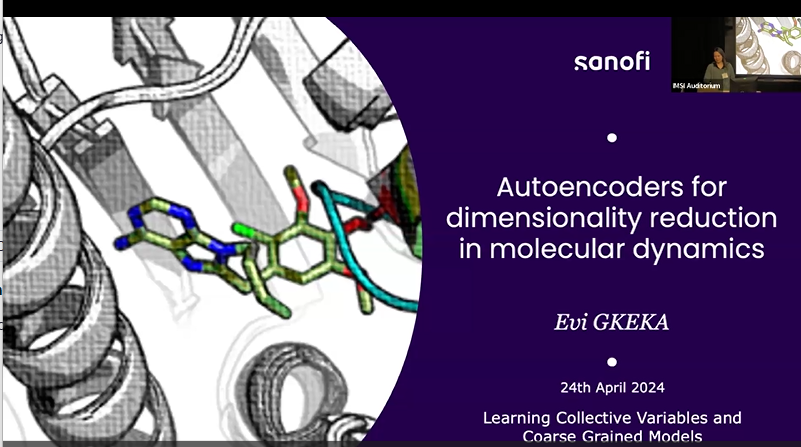Autoencoders for dimensionality reduction in molecular dynamics: Collective variable dimension, biasing, and transition states
Presenter
April 24, 2024
Event: 41731
Abstract
The heat shock protein 90 (Hsp90) is a molecular chaperone that controls the folding and activation of client proteins using the free energy of ATP hydrolysis. The Hsp90 active site is in its N-terminal domain (NTD). Our goal is to characterize the dynamics of NTD using an autoencoder-learned collective variable (CV) in conjunction with adaptive biasing force Langevin dynamics. Using dihedral analysis, we cluster all available experimental Hsp90 NTD structures into distinct native states. We then perform unbiased molecular dynamics (MD) simulations to construct a dataset that represents each state and use this dataset to train an autoencoder. Two autoencoder architectures are considered, with one and two hidden layers, respectively, and bottlenecks of dimension k ranging from 1 to 10. We demonstrate that the addition of an extra hidden layer does not significantly improve the performance, while it leads to complicated CVs that increase the computational cost of biased MD calculations. In addition, a two-dimensional (2D) bottleneck can provide enough information of the different states, while the optimal bottleneck dimension is five. For the 2D bottleneck, the 2D CV is directly used in biased MD simulations. For the five-dimensional (5D) bottleneck, we perform an analysis of the latent CV space and identify the pair of CV coordinates that best separates the states of Hsp90. Interestingly, selecting a 2D CV out of the 5D CV space leads to better results than directly learning a 2D CV and allows observation of transitions between native states when running free energy biased dynamics.
